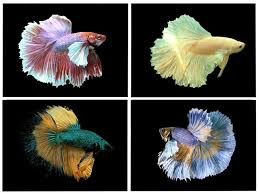Top Fin Aquatics
Super Delta Dumbo Male Fighter
Super Delta Dumbo Male Fighter
Couldn't load pickup availability
Overview of Siamese Fighting Fish (Betta Splendens)
Native Location: Thailand
Climate: Tropical
Size: 6 – 8 cm (2.4 – 3.1 inches)
Temperament: Aggressive
Diet: Carnivore
Breeding: Easy-Moderate
Temperature Range: 22 – 30°C (72 – 86°F)
Preferred pH Range: 6 – 8
Minimum Aquarium Size: 38L (10 gallons)
Potential Tankmates: Cory Catfish, Kuhli loaches
Care Level: Intermediate-Advanced
Introduction
Siamese Fighting Fish, also known as Betta Splendens, are captivating and vibrant fish known for their aggressive nature and stunning appearance. Originating from the still waters of canals, rice paddies, and flood plains of Thailand, particularly the Chao Phraya river basin, Bettas have a rich history intertwined with human culture. Their name derives from their use in organized fighting competitions, where males were bred for increased aggression.
Physical Characteristics
Male Bettas are renowned for their brilliant colors and long, flowing fins, while females display more subdued hues and shorter fins. In the wild, their coloration is less vivid, but selective breeding in captivity has led to a variety of pigmentation, including white, brown, black, and numerous mixed colors such as yellow, blue, and red. Both sexes have similar torpedo-shaped bodies and upturned mouths, which they use to catch insects and larvae.
Unique Features
Bettas possess a labyrinth organ, allowing them to breathe atmospheric air. This adaptation enables them to survive in low-oxygen environments, a trait not common in many other fish species.
Diet and Feeding
Bettas are carnivorous and thrive on live foods. They will adapt to eating flake and frozen foods if necessary. Feeding should be limited to what they can consume in three to five minutes to avoid overfeeding.
Tank Setup and Care
Bettas require at least a 38L (10-gallon) tank to reduce toxin build-up and ensure adequate swimming space. A warm tank environment is essential, and decorations should be soft-edged to prevent fin damage. Plants and soft-edged caves can provide stimulation and hiding spots.
Compatibility and Tankmates
Male Bettas should not be housed together due to their aggressive nature. A single male can be kept with females, but careful monitoring is needed to manage any aggression. Suitable tankmates include small, peaceful species like Cory Catfish and Kuhli loaches. Avoid fin-nipping fish.
Breeding
Breeding Bettas is relatively straightforward and is best done in a tank smaller than 38L (10 gallons). Males perform a courtship dance, and females respond by darkening their colors and developing breeding bars. Males build bubble nests to protect the fertilized eggs. After spawning, the female should be removed to prevent male aggression. The male will care for the eggs until they hatch. Once the fry start swimming, the male should be removed to prevent him from eating them.
Lifespan and Maintenance
Bettas have a shorter lifespan compared to other fish, with breeders seeing the most success in the first year. Proper care, including regular water changes and appropriate feeding, is crucial for maintaining their health and vibrancy.
Siamese Fighting Fish are beautiful and intriguing but require a dedicated and informed approach to care. Their aggressive nature and specific needs make them suitable for intermediate to advanced fish keepers. With proper care, Bettas can thrive and bring vibrant life to any aquarium.
Share


